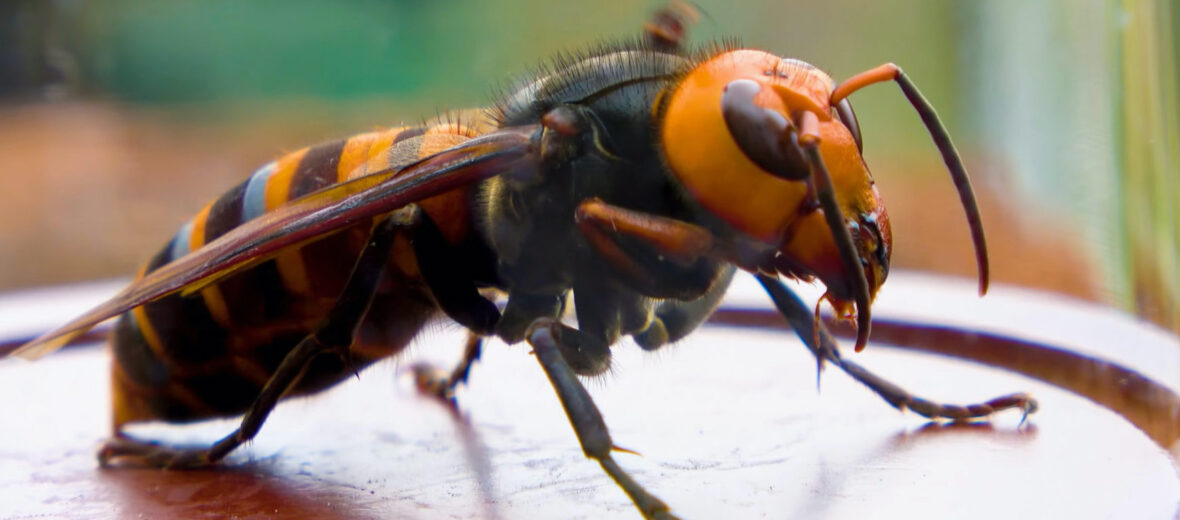
The Japanese giant hornet. They’re twice as large as a normal hornet, defensive, their sting can cause tissue necrosis (tissue death), and they bring their young the decapitated bodies of their enemies. These highly territorial hornets find strength in numbers. Where there is 1, there are many. They also have no problem stinging repeatedly to get their… point across.
First the Stats…
Scientific name: Vespa mandarinia japonica
Weight: Up to .31 ounces
Length: Up to 2.2 inches
Wingspan: Up to 2.36 inches
Lifespan: Up to 1 year
Now on to the Facts!
1.) Don’t bother trying to outrun them. These hornets can fly up to 25 mph!
2.) Only the females have stingers. Males have a spike at the end of their abdomen, but no active stinger.
3.) These hornets prey almost exclusively on honeybees. These bees are beheaded and brought back to the hornet’s hive for feeding to their young. The larvae are also kidnapped and brought back to feed to their larvae.
4.) The plan of attack is to send a single scout who then leaves pheromone markers for the rest of the hive to follow. The swarm then arrives to lay waste to the honeybee colony. A single hornet can kill up to 40 bees a minute. 30 or more can take down a 30,000 – 40,000 member hive in less than 4 hours!
5.) Japanese honeybees have a cool defense though. They swarm the attackers and vibrate their wings, to create a kinetic energy that literally bakes the hornets alive!
But wait, there’s more on the Japanese giant hornet!
6.) In 2017, a wheelchair bound woman was killed by a swarm that stung her over 150 times in less than an hour. Emergency crews tried, to no avail, to thwart the hornets attacks; but were too late and she fell victim to their attacks. How horrible a death would that be?!
7.) Their venom contains mandaratoxin, which can dissolve tissue and destroy red blood cells. Even if you survive a swarm you might end up dealing with kidney issues later on.
Did you know…?
Up to 40 people a year die from the stings of these giants! Primarily due to anaphylactic shock (a lethal allergic reaction).
8.) Their stinger is up to .25 of an inch long!
9.) Japanese hornets don’t eat solid food. They feed off of the vespa amino acid mixture (VAAM) that is secreted by their larvae. The adults will catch, kill and palpate (chew) their victims, but then they take this gum-like paste to the larvae. In thanks, the larvae will produce VAAM to feed the adults.
10.) The queen lays about 100 eggs per day!
But wait, there’s still more on the Japanese giant hornet!
11.) Recently, these hornets have been found in the Pacific northwestern United States.
12.) The honeybees in the U.S. have not yet evolved the defense against these hornets of cooking them via wing beats. So they stand defenseless.
Now a Short Japanese Giant Hornet Video!
Also, check out the Critter Science YouTube channel. Videos added frequently!
Want to suggest a critter for me to write about? Let me know here.



